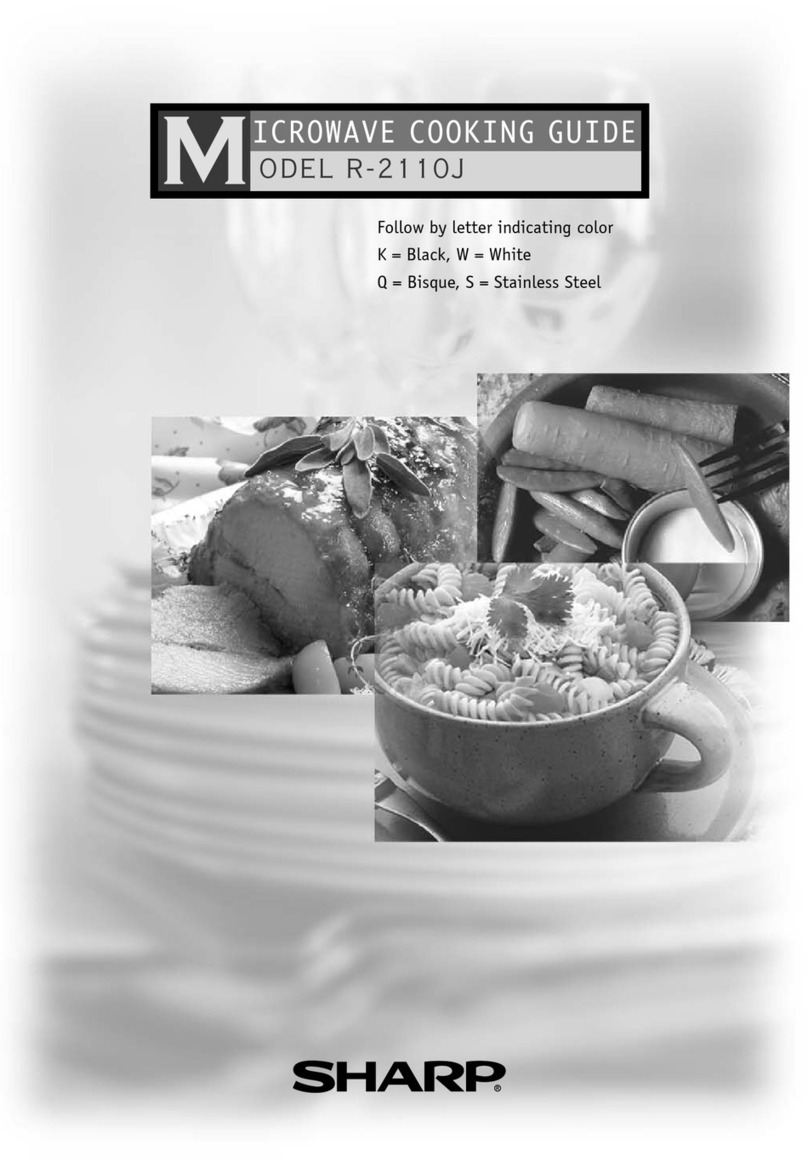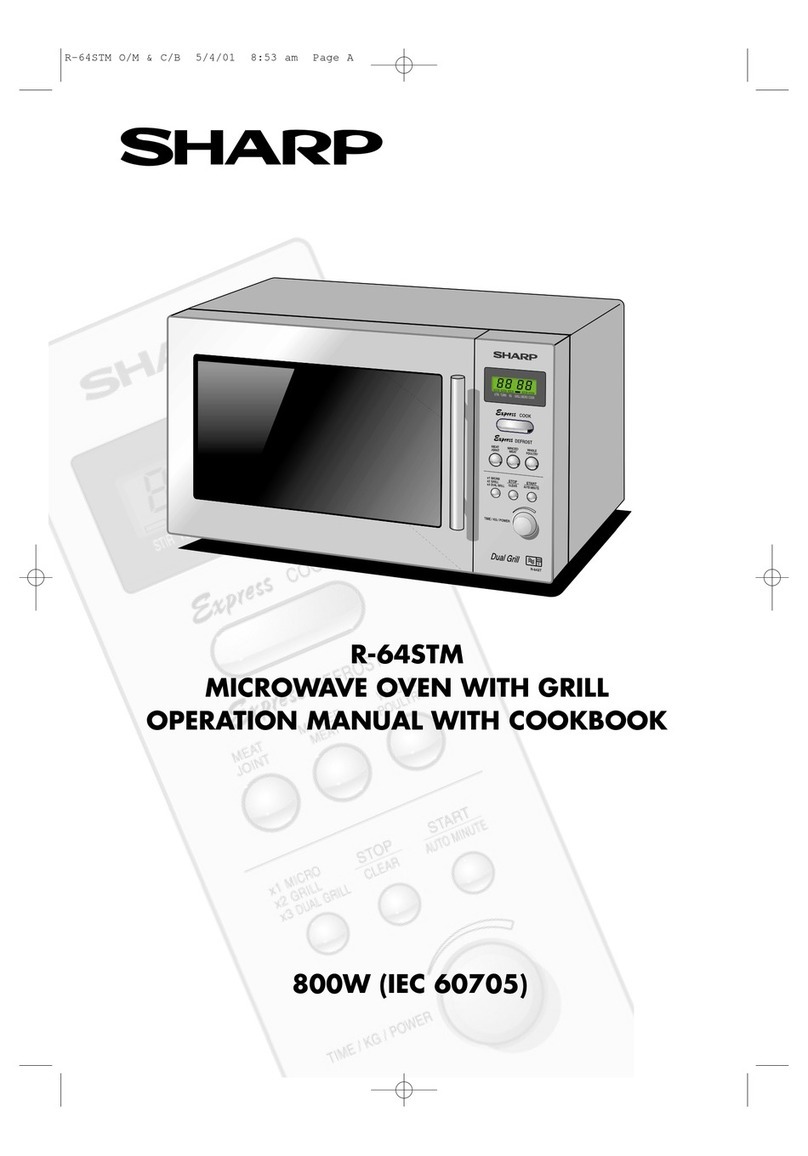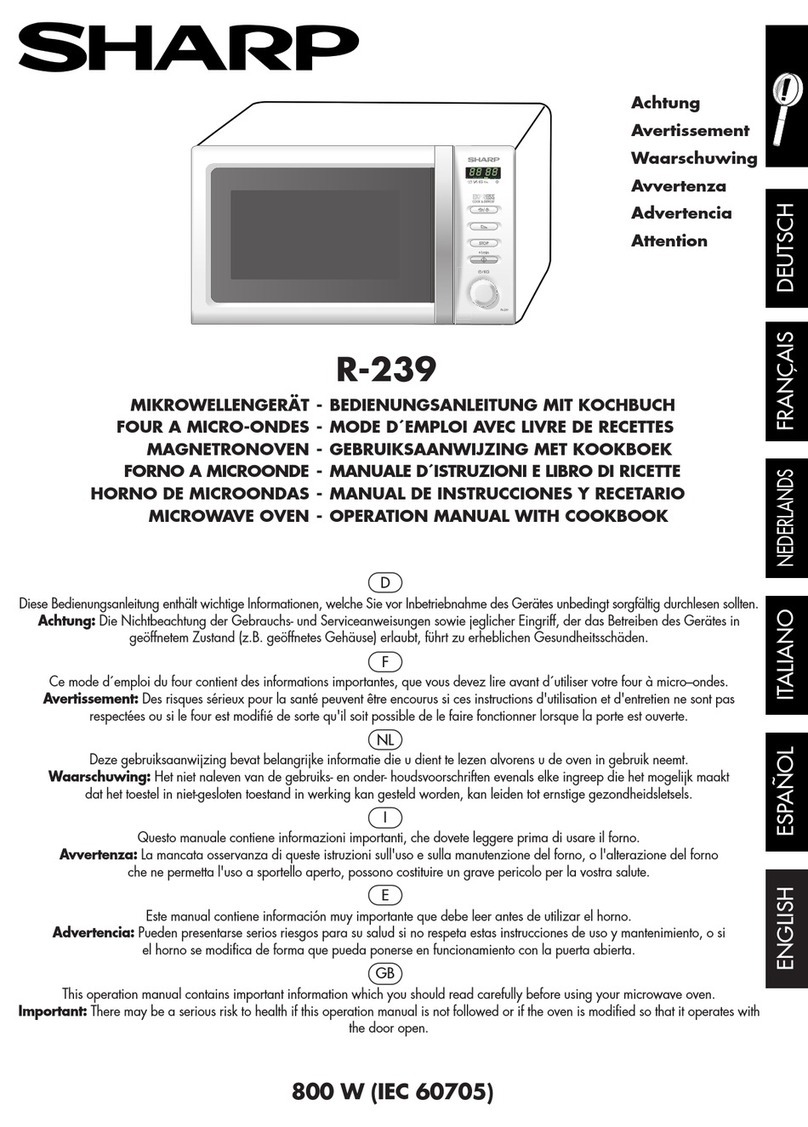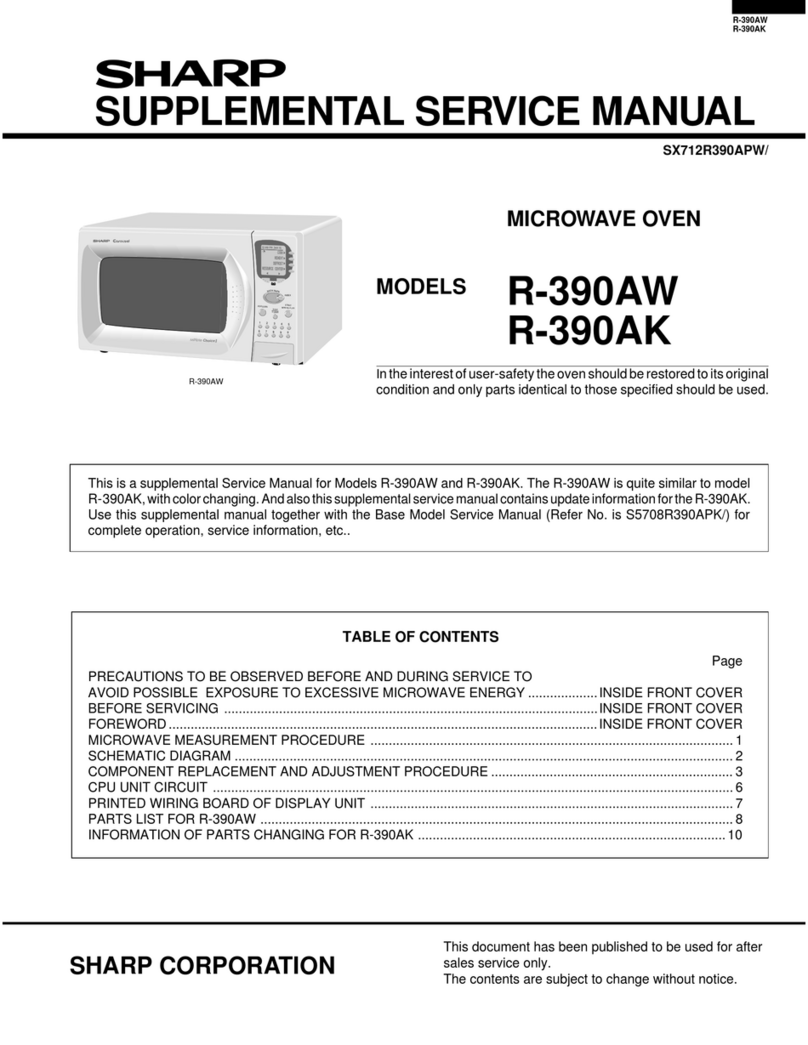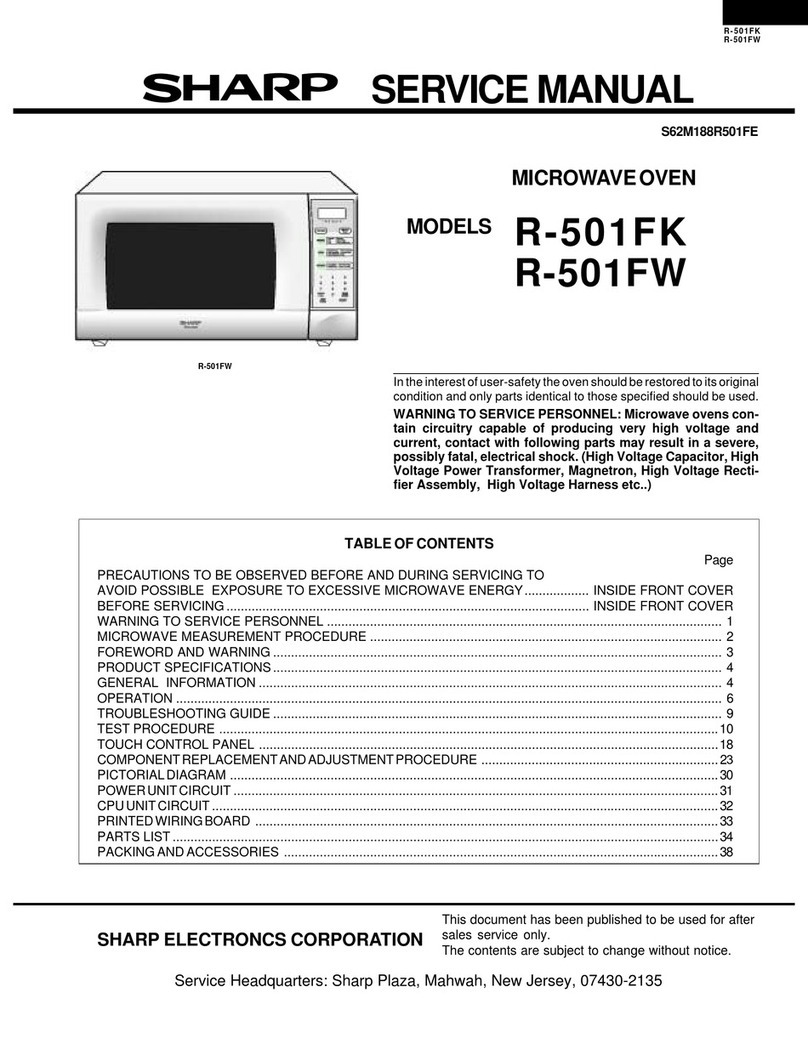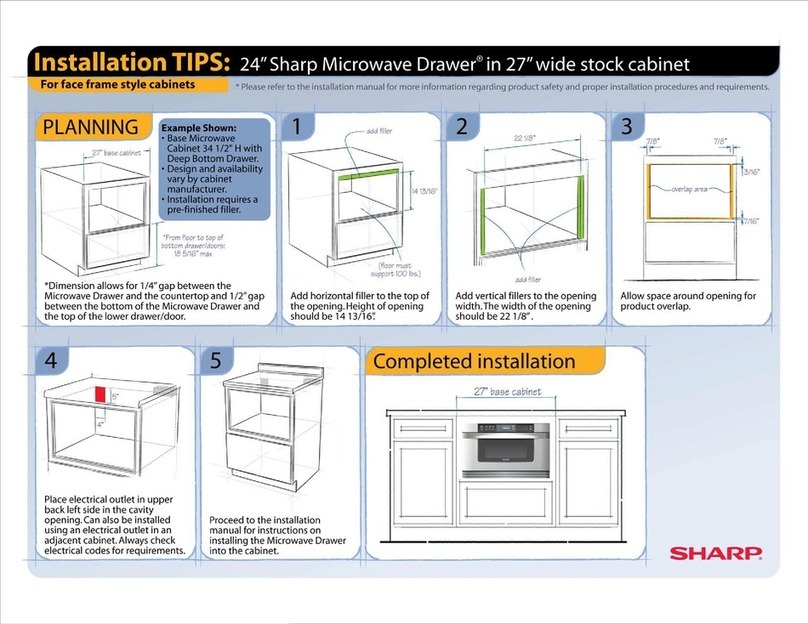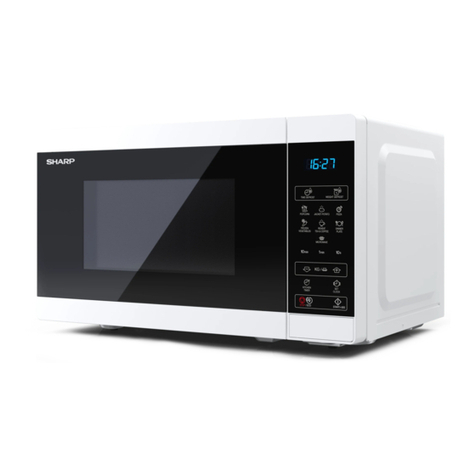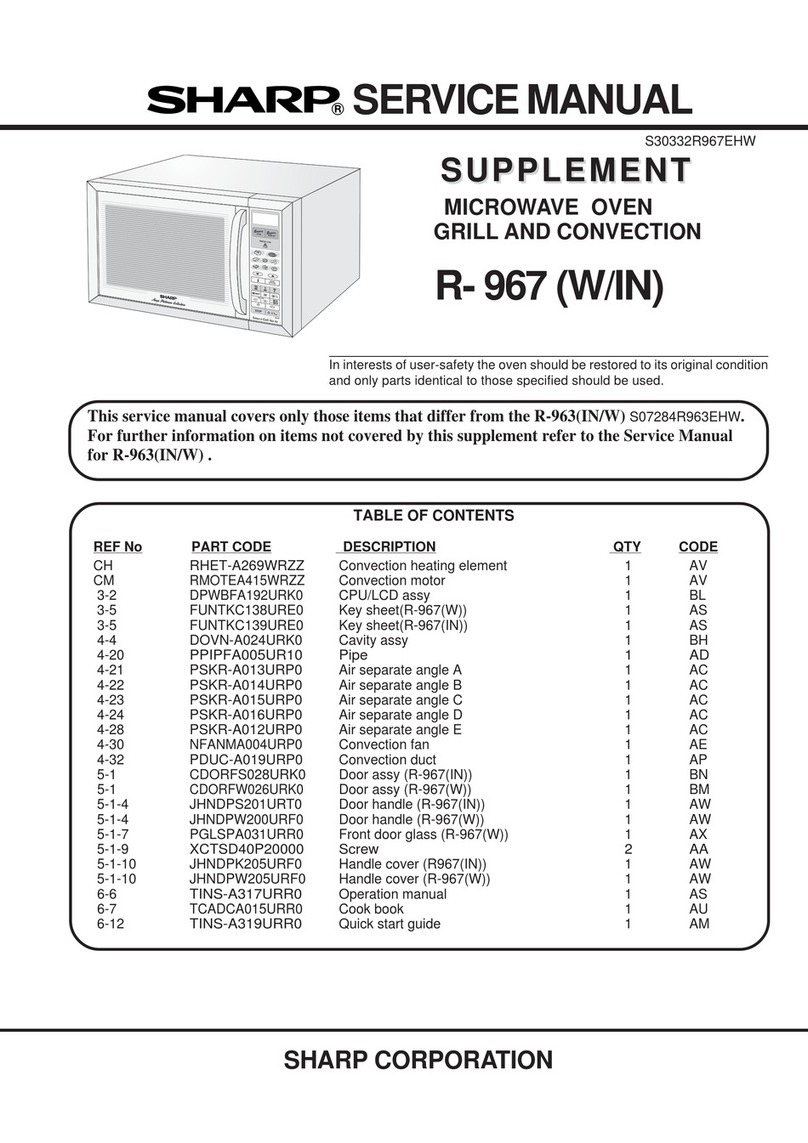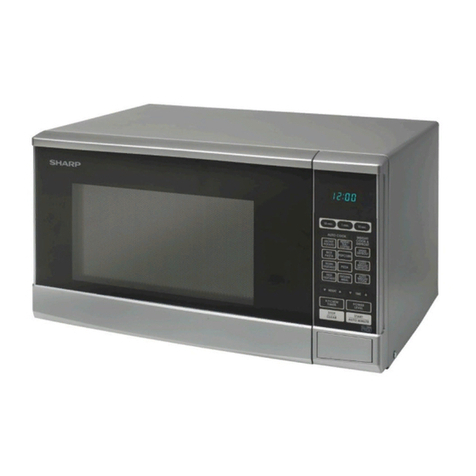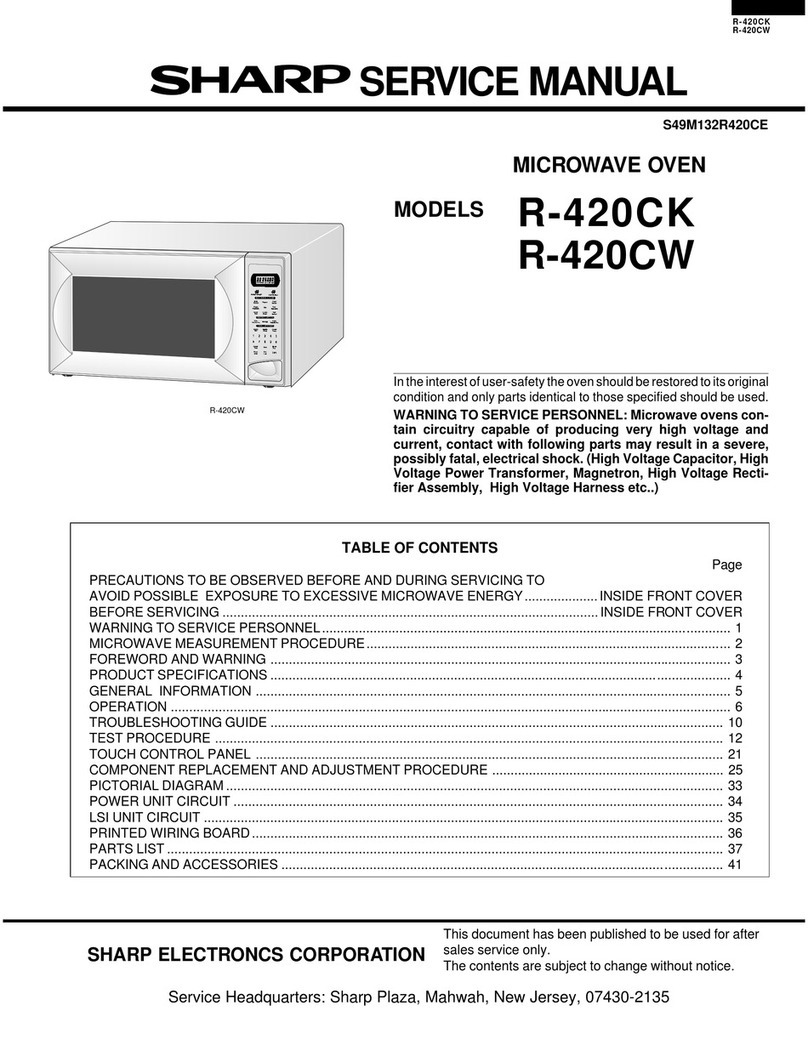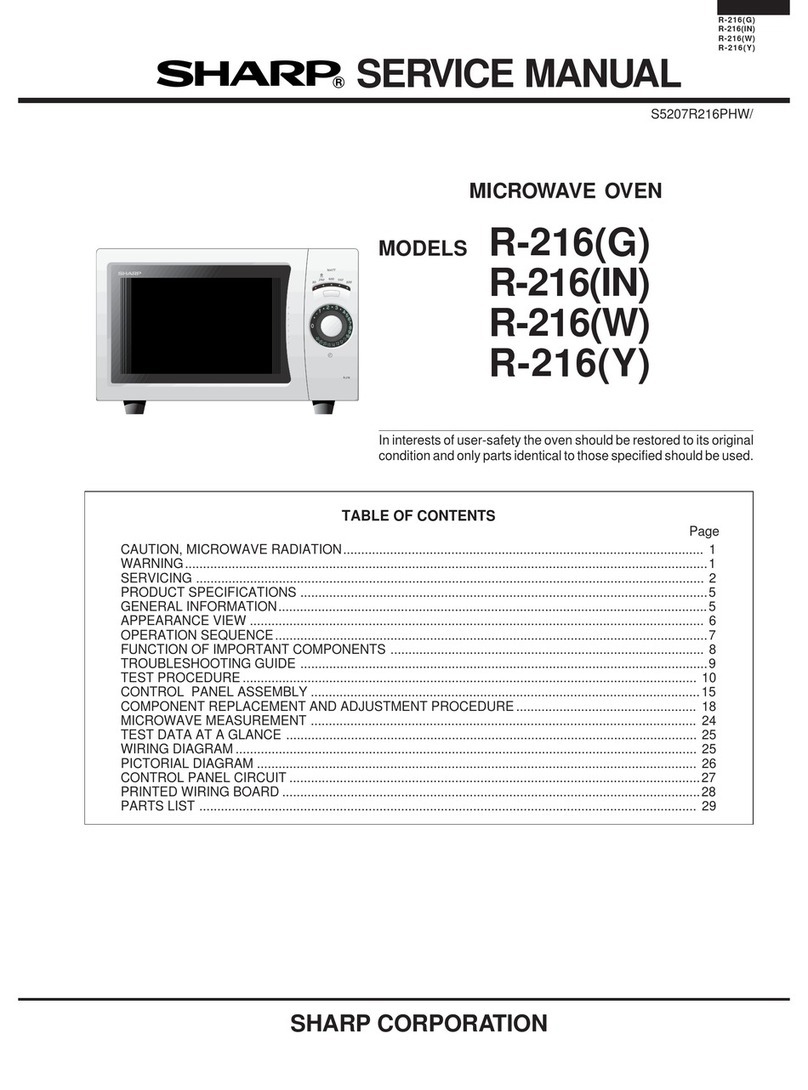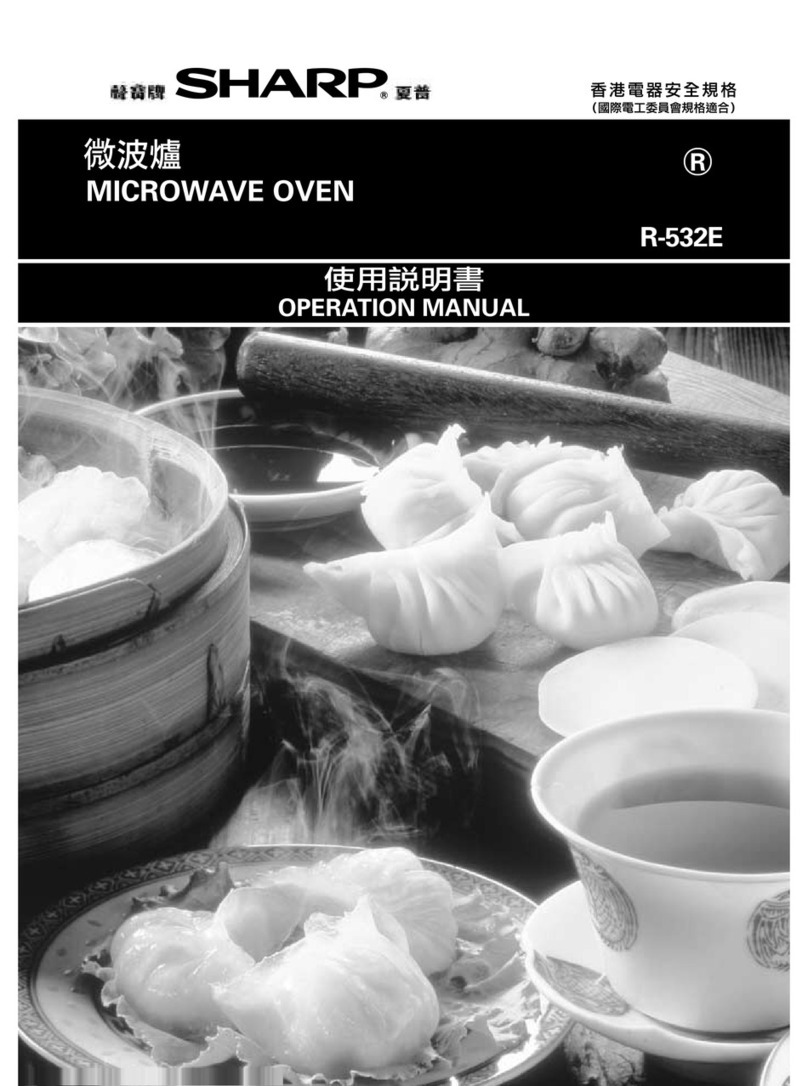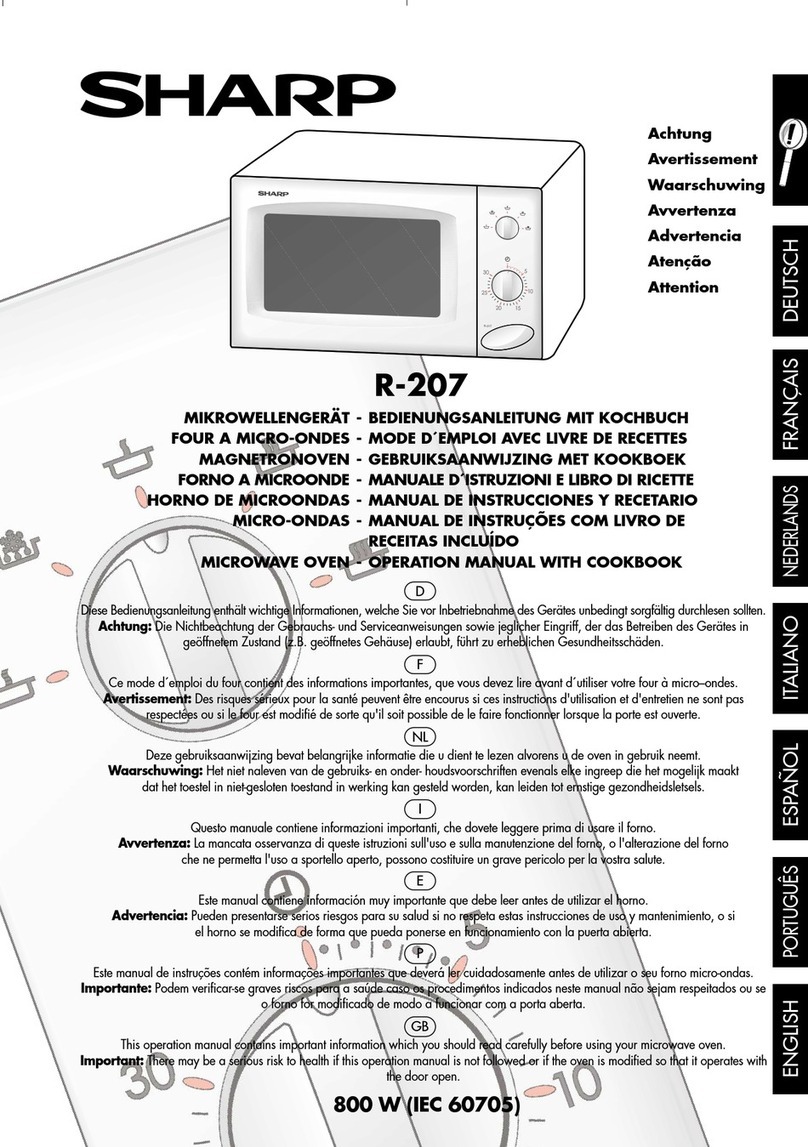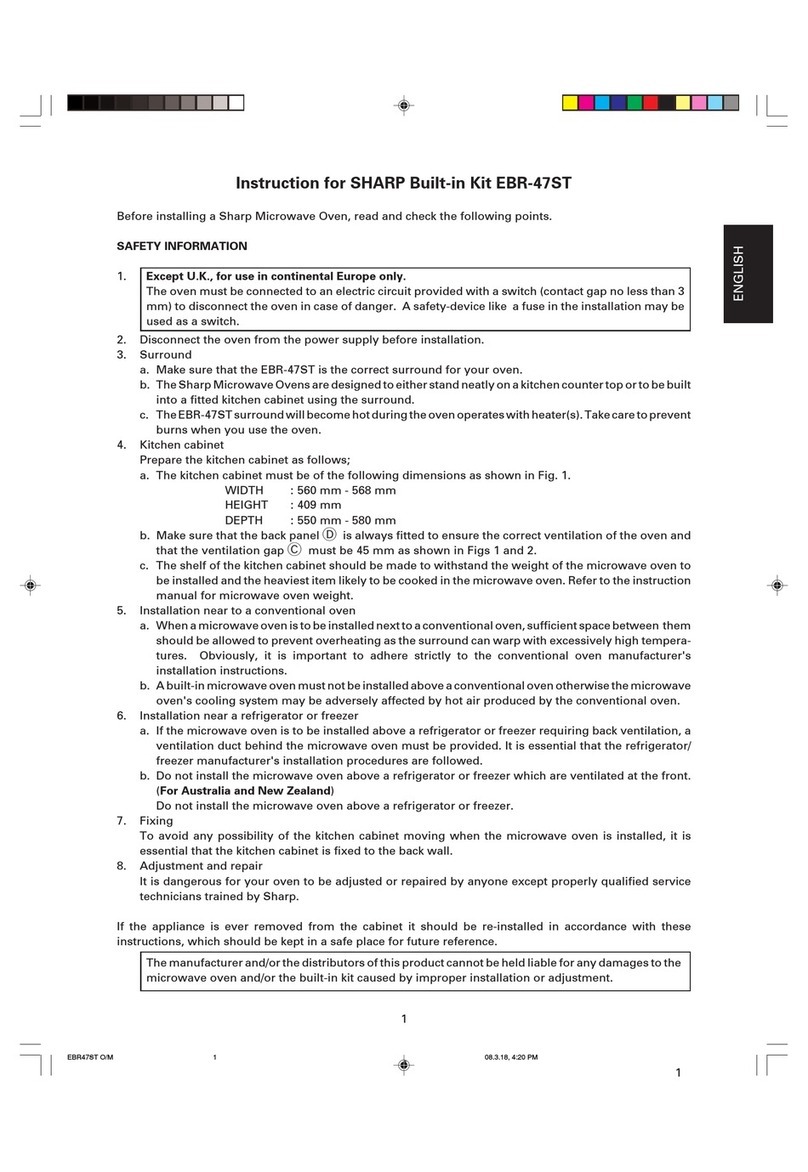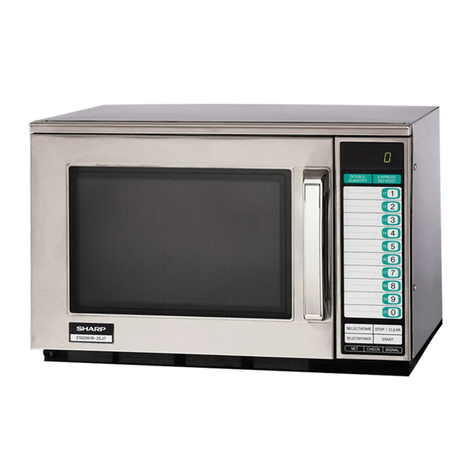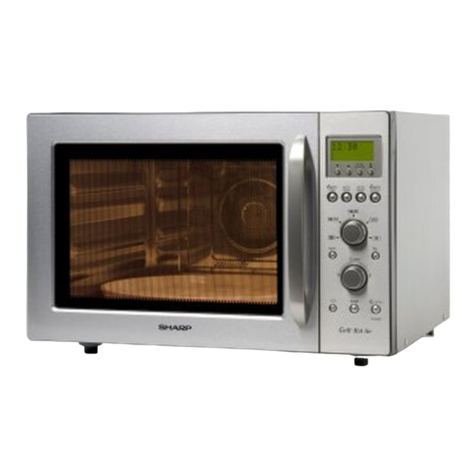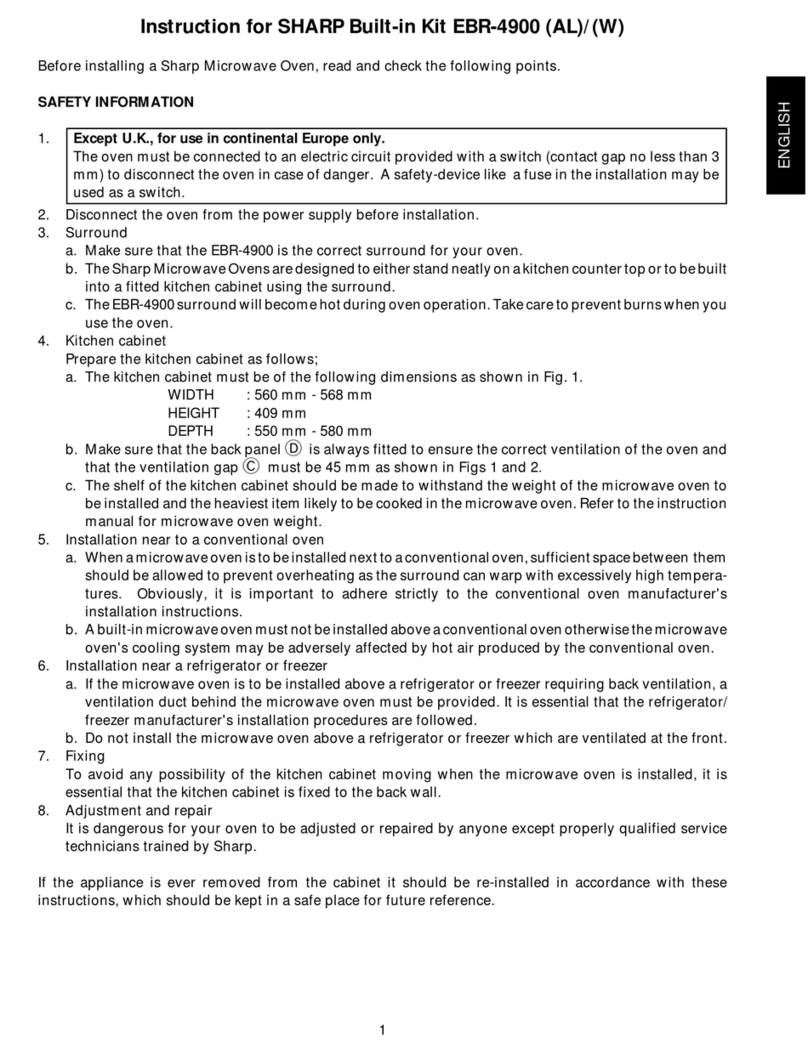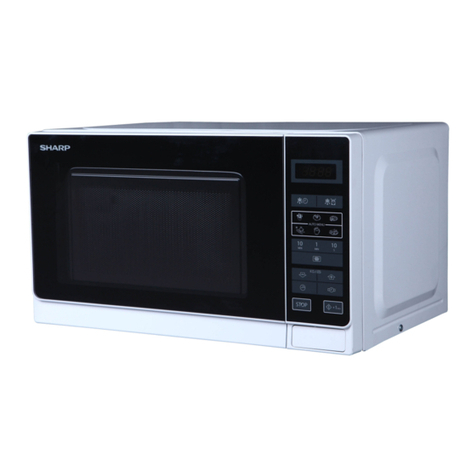5 - 2
[3] GRILL COOKING CONDITION
1. TOP GRILL (Figure O-3)
In this condition the food is cooked by the top grill heating
element. Press GRILL button. And enter the cooking time by
rotate ENCODER dial. When the START button is pressed, the
following operation occur:
1.
The numbers on the digital readout start the count down to zero.
2. The oven lamp, cooling fan motor and turntable motor are
energized.
3. The relay RY3 is energized and the main supply voltage is
applied to the top grill heating element.
4. Now, the food is cooked by the top grill heating element.
2. BOTTOM GRILL (Figure O-3b)
In this condition the food is cooked by bottom grill heating
element energy. Press GRILL button 2 times. And enter the
cooking time by rotate ENCODER dial. When the START button
is pressed, the following operation occur:
1.
The numbers on the digital readout start the count down to zero.
2. The oven lamp, cooling fan motor and turntable motor are
energized.
3. The relay RY4 is energized and the main supply voltage is
applied to the bottom grill heating element.
4. Now, the food is cooked by the bottom grill heating element.
3. TOP AND BOTTOM GRILLS (Figure O-3c)
In this condition the food is cooked by top and bottom grill
heating elements energy. Press GRILL button 3 times. And
enter the cooking time by rotate ENCODER dial. When the
START button is pressed, the following operation occur:
1.
The numbers on the digital readout start the count down to zero.
2. The oven lamp, cooling fan motor and turntable motor are
energized.
3. The relay RY4 is energized and the main supply voltage is
applied to the bottom grill heating element.
4. The relay RY3 is energized and the main supply voltage is
applied to the top grill heating element.
5. Now, the food is cooked by the top and bottom grill heating
elements.
[4] CONVECTION COOKING CONDITION
1. PRE-HEATING (Figure O-4)
Press CONV. (ºC) button for programme the desired convection
temperature. When the INSTANT COOK/START button is
touched, the following operations occur:
1. The coil shut-off relays RY1 and RY6 are energized, the oven
lamp, cooling fan motor and turntable motor are turned on.
2. The coil shut-off relays RY3 and RY4 are energized by
control unit and the main supply voltage is added to the top
and bottom heating elements.
3. When the oven temperature reaches the selected pre-heat
temperature, the following operations occur:
1) The coil shut-off relays RY3 and RY4 are energized by
control unit temperature circuit and thermistor, opening the
circuit to the top and bottom grill heating elements.
2) The oven will continue to function for 30 minutes, turning
the top and bottom heating elements on and off, as needed
to maintain the selected pre-heat temperature. The oven
will shut-down completely after 30 minutes.
2. CONVECTION COOKING (Figure O-4)
When the pre-heat temperature is reached, a beep signal will
sound indicating that the holding the temperature has been
reached in the oven cavity. Open the door and place the food
to cooked in the oven. Press CONV.(ºC) button. And enter the
convection time by rotate ENCODER dial. When the START
button is pressed, the following operation occur:
1.
The numbers on the digital readout start the count down to zero.
2. The oven lamp, cooling fan motor, turntable motor and
convection motor are energized.
NOTE: When the convection temperature 40°C is selected, the
convection motor is not energized.
3. The relays RY3 and RY4 are energized (if the cavity
temperature is lower than selected temperature) and the
main supply voltage is applied to the top and bottom heating
elements to return to the selected cooking temperature.
4. Upon completion of the cooking time, the audible signal will
sound, and the oven lamp, turntable motor, cooling fan motor,
convection motor, top and bottom heating elements are de-
energized. At the end of convection cycle, if the cavity air
temperature rise above 120°C, the circuit to the relay RY6
will be maintained (by the thermistor circuit) to continue
operation of the cooling fan motor until temperature drops
below 105°C, at that time the relay RY6 will be de-energized,
turning off the fan motor.
[5] COMBI COOKING CONDITION
1. MICROWAVE AND CONVECTION (Figure O-5a)
Press MIX button 1 time. And enter the desired cooking time by
rotating the ENCODER dial. And press MICRO POWER button
to set the desired microwave power. And press the CONV. (ºC)
button to set the cooking temperature. When the INSTANT
COOK/START button is touched, the following operations occur:
1.
The numbers on the digital readout start the count down to zero.
2. The oven lamp, cooling fan motor, turntable motor and
convection motor are energized.
3. The relay RY3 will be energized and the main supply voltage
is applied to the top grill heating element.
4. The relay RY4 is energized (if the cavity temperature is lower
than selected temperature) and the main supply voltage is
applied to the bottom heating element.
5. The relay RY2 is energized and the microwave energy is
generated by magnetron.
6. Now, the food is cooked by microwave and convection
energy simultaneously
2. MICROWAVE AND TOP GRILL (Figure O-5b)
Press MIX button 2 times. And enter the desired cooking time
by rotating the ENCODER dial. And press MICRO POWER
button to set the desired microwave power. When the INSTANT
COOK/START button is touched, the following operations occur:
1.
The numbers on the digital readout start the count down to zero.
2. The oven lamp, cooling fan motor and turntable motor are
energized.
3. The relay RY3 is energized and the main supply voltage is
applied to the top grill heating element.
4. The relay RY2 is energized and the microwave energy is
generated by magnetron.
5. Now, the food is cooked by microwave and top grill
simultaneously.

